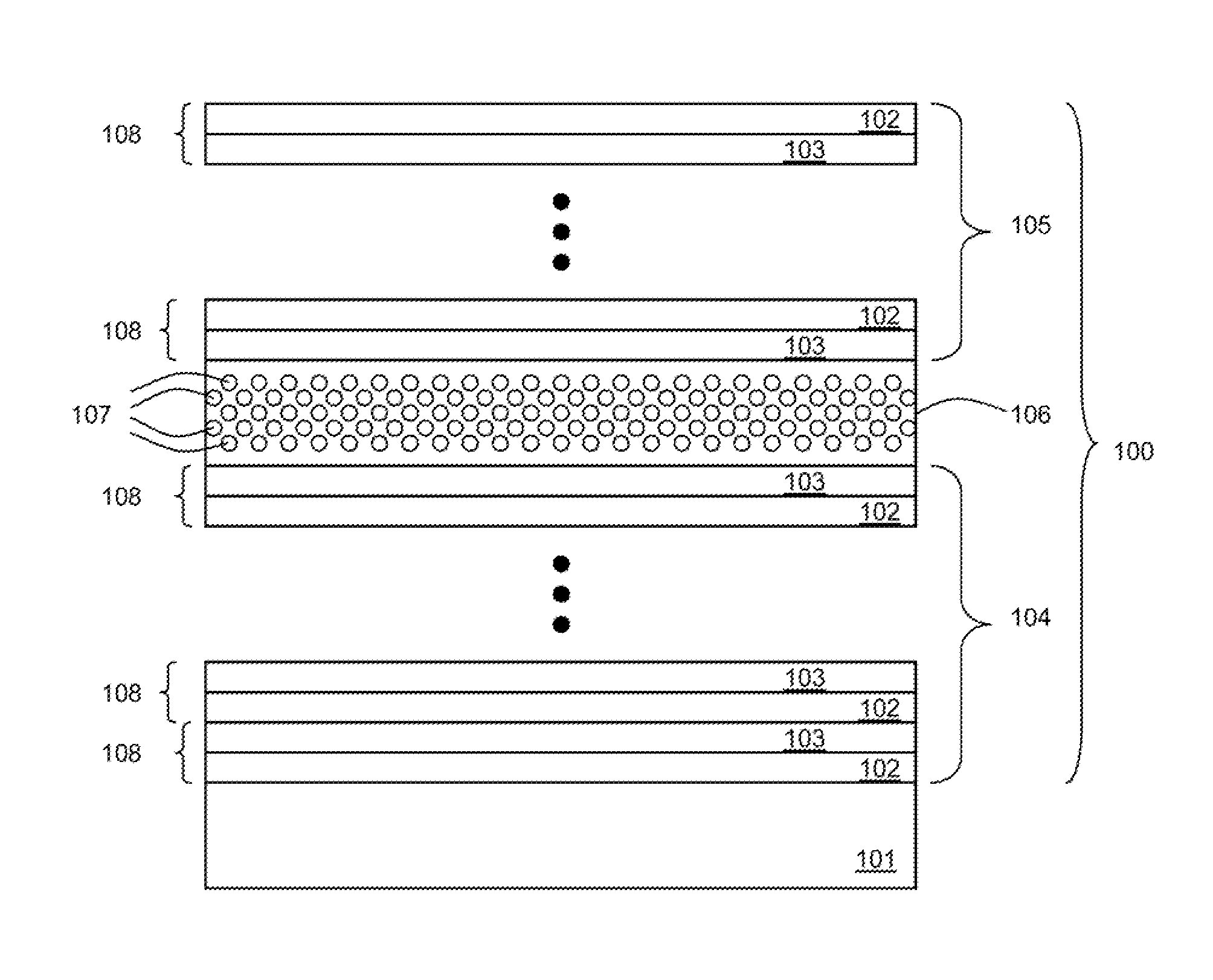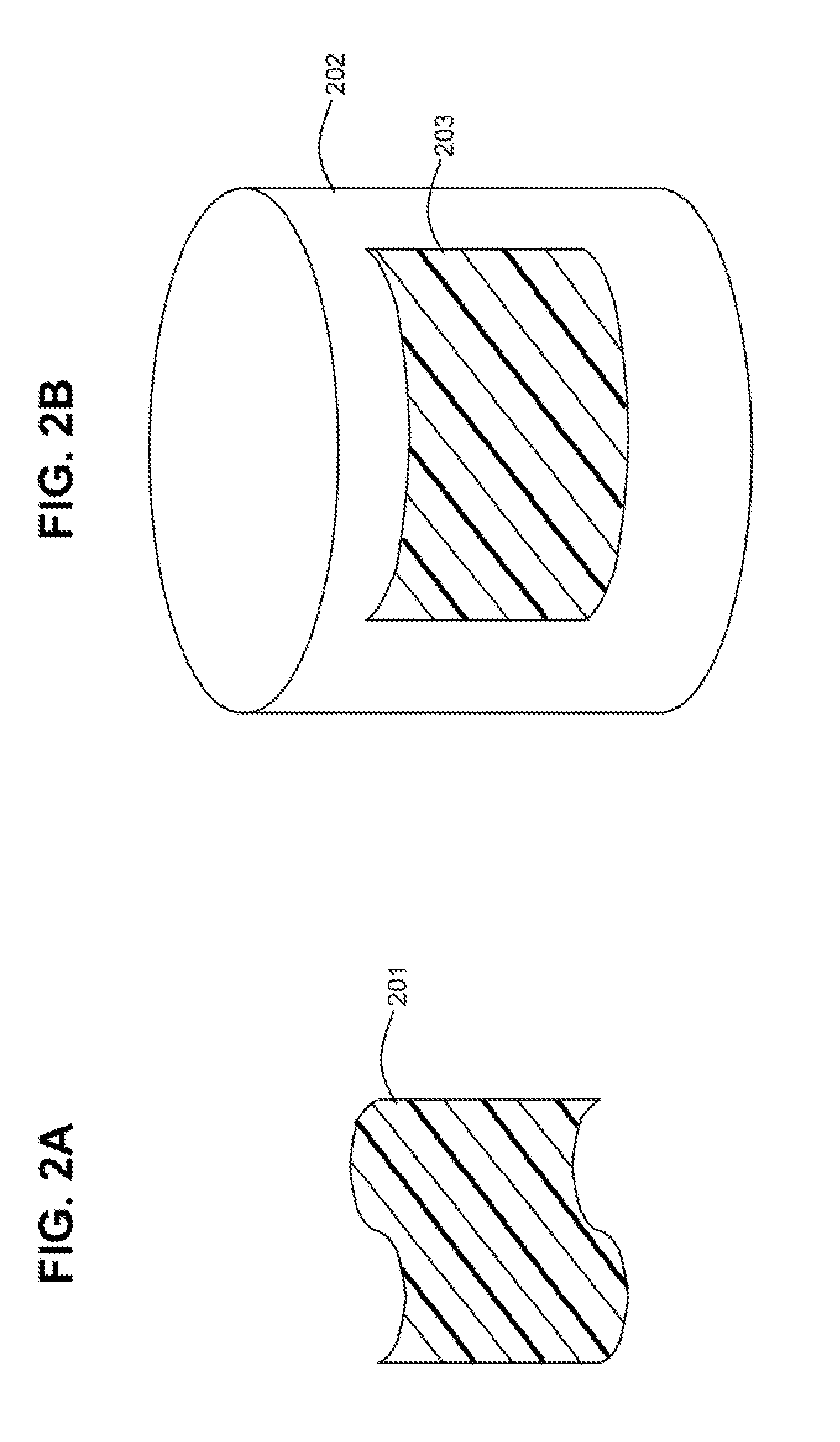Flexible microcavities through spin coating
a technology of microcavities and emitters, which is applied in the direction of semiconductor lasers, plasters, dressings, etc., can solve the problems of slow layer formation, inconvenient manufacturing, and inability to precisely control the thickness of deposited materials in conventional spin coatings
- Summary
- Abstract
- Description
- Claims
- Application Information
AI Technical Summary
Benefits of technology
Problems solved by technology
Method used
Image
Examples
Embodiment Construction
[0039]In one or more embodiments of the present invention, there is disclosed a spin coating process to make a flexible microcavity structure using organic materials, and the microcavity structure resulting from the process.
[0040]Microcavities that help confine electromagnetic radiation (e.g., light) are useful for realizing highly efficient lasers, single photon emitters and displays. Most microcavity structures known in the prior art are realized using techniques such as molecular beam epitaxy, chemical vapor deposition or sputtering. Compared to these methods, spin coating is a simpler method to deposit material on a substrate. Spin coating is a process that has been used to produce portions of microcavities, but the application of this process to a DBR microcavity structure has been limited due to perceived inability to adequately control the thickness of the deposited materials.
[0041]Applicants have discovered and reduced to practice sufficient control over layer thicknesses de...
PUM
 Login to View More
Login to View More Abstract
Description
Claims
Application Information
 Login to View More
Login to View More - R&D
- Intellectual Property
- Life Sciences
- Materials
- Tech Scout
- Unparalleled Data Quality
- Higher Quality Content
- 60% Fewer Hallucinations
Browse by: Latest US Patents, China's latest patents, Technical Efficacy Thesaurus, Application Domain, Technology Topic, Popular Technical Reports.
© 2025 PatSnap. All rights reserved.Legal|Privacy policy|Modern Slavery Act Transparency Statement|Sitemap|About US| Contact US: help@patsnap.com



